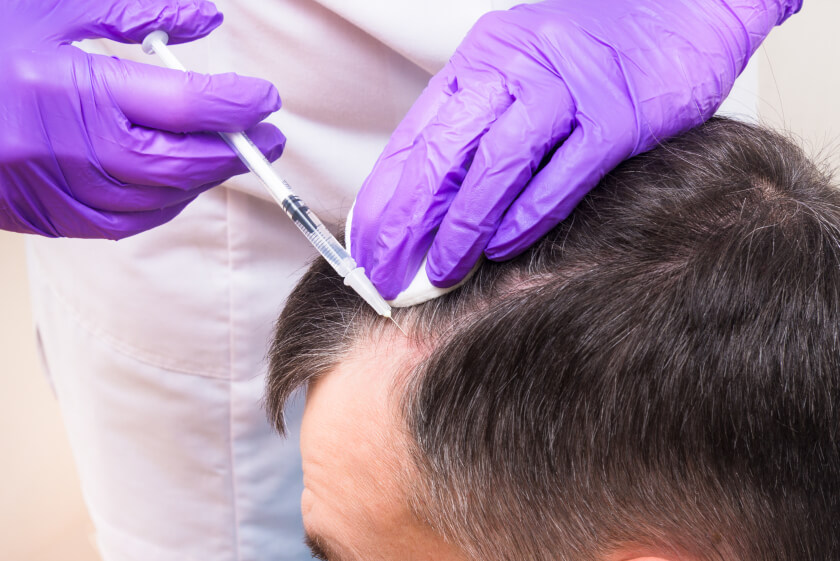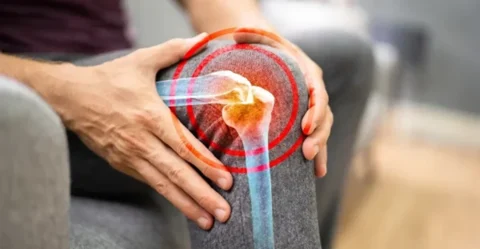Male pattern baldness is the most common type of hair loss that burdens the majority of adult men. It causes noticeable hair thinning, receding hairline, and patches of bald spots on the crown or back of the head. Fortunately, there is a wide variety of hair loss treatments that can slow down this condition and one of those is platelet-rich plasma therapy.
So how does platelet-rich plasma therapy help deal with male-pattern baldness? When injected to the areas with hair loss, PRP can increase blood supply to activate dormant hair follicles which will encourage the growth of new hair strands. The concentrations of platelets and growth factors in PRP can also extend the growth phase of the hair cycle to prevent further hair thinning.
How PRP Works For Reversing Male Pattern Baldness
Although age-related hair loss is inevitable, some men can start losing hair accompanied by a receding hairline as early as in their teens or twenties. The most probable cause for this phenomenon is male pattern hair loss or androgenic alopecia. It occurs due to the presence of DHT which can miniaturize the follicles and cause excessive hair shedding and stop any new hair growth.
While male or female pattern baldness is not a serious medical concern, it can get worse over time to the point that a patient may need hair transplant surgery.
PRP is one of the best immediate solutions to address the symptoms of early stages of male pattern hair loss and encourage hair growth without a surgical procedure. It is an autologous hair restoration treatment that makes use of the platelets in a patient’s own blood.
These platelets are rich in different growth factors that promote cell growth, tissue healing, and blood vessel formation to renew the follicles and improve hair regrowth. The platelet plasma growth factors can also support the active hair cycle and prolong the growth phase. Additionally, they can activate stem cells in the follicles to stimulate the growth of thicker and longer hair.
What To Expect During The PRP Procedure

Patients with hair loss need to consult with their provider first before getting PRP injections. It’s important to assess the extent of androgenetic alopecia symptoms and determine if there are any other causes for hair loss.
The administration procedure of the injections is simple but before applying the treatment to the scalp, the PRP serum needs to be prepared. Here’s how PRP injections are created:
- It will require a quick blood draw, usually from the patient’s arm. For one hair restoration session, a small blood sample of about 10 to 15 mL is obtained for PRP preparation but this can vary depending on how many areas will be injected.
- After extraction, the blood is placed in a centrifuge machine to separate the platelets from the red and white blood cells.
- This will be followed by platelet activation to ensure the release of the various growth factors and proteins when injected to the scalp.
The PRP serum can be injected as a standalone treatment to the affected areas or it can be given in conjunction with microneedling. PRP with microneedling initially causes tiny injuries that will trigger the body’s natural repair process to produce more collagen which can boost tissue healing and cell regeneration of the follicles. It can also deliver the concentrated platelets and growth factors deeper to the scalp.
Effectiveness of PRP Treatments for Hair Loss
With sustained treatment sessions, PRP is an effective hair restoration therapy for patients with male pattern baldness. According to a 2014 research, PRP-treated men can experience a reduction in hair loss after an average of four treatments. The injections provided improvements in terminal hair density, increased the number of hair follicular units, and made the hair roots stronger.
Additional studies also suggest that PRP injection therapy is best when a patient has dormant or miniaturized hair follicles. The treatment may not be able to reverse the male pattern baldness when the follicles are completely damaged or dead.
PRP injections can also be given after hair transplantation to increase the success rate and survival of the grafts. It can also improve the quality of the new hair and accelerates the healing and recovery of the treated sites.
When Can You See Results of PRP Hair Loss Treatments?
The results of PRP therapy for hair restoration are not immediate since hair growth naturally takes time. There can be some improvements in hair texture and thickness of hair shaft in about two weeks from the first treatments but it can take up to six months to see a significant increase in the percentage of anagen hairs.
Patients may also need more than one PRP session to get optimal results for their hair growth. The number of follow-up injections will vary for each individual but on average, they are done every 3 to 6 months after their initial treatment plan.
What Are The Potential Side Effects of PRP for Hair Loss Therapy?

Since PRP uses a patient’s blood, it eliminates any risk of an allergic reaction and other severe side effects after the treatment. However, since it still requires an injection procedure, there are several aftereffects that can happen such as:
- Pain at the injection sites
- Minor bleeding
- Infection
- Bruising
- Temporary hair shedding
To minimize complications from PRP treatment, patients with active scalp infection, bleeding disorders, low platelet count, and autoimmune disease should be advised to seek other hair restoration procedures.
Benefits of PRP vs Other Treatment Options for Male Pattern Baldness
There are many other treatment choices for male pattern baldness and it’s important that patients are informed about their options before making a decision. Here’s how PRP compares to the other possible therapies for hair restoration:
| PRP | Hair Transplant | Medications | Laser Treatment | |
| Process | Non-surgical | Surgical and requires several incisions on the central scalp | Non-surgical | Non-surgical |
| Most common forms are topical Minoxidil solutions and oral Finasteride | ||||
| Side effects and risks | No adverse effects | There is a risk for scarring, infection, and a small chance that the scalp may reject the grafts | Can cause scalp dryness and itching | May cause scalp redness, itching, swelling |
| Finasteride may have some sexual side effects such as decreased libido or sexual dysfunction | ||||
| Downtime | Zero downtime | A minimum of 2 to 3 weeks for healing | No downtime | Minimal downtime |
Buy PEP Factor and Other Medical Supplies for Hair Loss Treatments at FACE Med Store
PRP injections can effectively address the signs and symptoms of male and female pattern hair loss and encourage hair regrowth. Although its results are long-lasting, they are not permanent and patients may need another product to help maintain their hair health.
At FACE Med Store, we offer PEP Factor solutions which are a topical treatment enriched with fibroblast growth factors, proteins, and copper peptides that can support healthy hair growth and improve the results of initial PRP injections. To learn more about this product or to inquire about our stocks, call us today.
Learn More: Is PRP and ACell A Good Treatment For Hair Loss?






